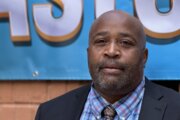Though colleges have been compelled by the U.S. Supreme Court to not deliberately engage in race-conscious admissions, over a billion dollars in scholarships is available for Black, Indigenous and other students of color to attend college, experts say. When it comes to paying for college, they add, BIPOC students shouldn’t miss opportunities to win multiple scholarships.
Planning ahead, applying early and connecting with a school’s financial aid counselor could reap benefits for a family and avoid major student loan debt.
Scholarship insiders like the National Scholarship Providers Association observe the number of minority students applying for financial aid has remained fairly consistent, but the landscape is evolving. In today’s social climate, “there is growing awareness and effort to ensure equity in higher education access, which has resulted in more targeted outreach by scholarship providers,” NSPA executive director Jackie Bright wrote in an email.
A recent report by the National College Attainment Network revealed that a significant number of low-income and minority students missed out on an estimated $3.75 billion in federal Pell Grants by not completing the Free Application for Federal Student Aid, known as FAFSA. With this in mind, experts say there are strategies for students and their families to increase the chances of getting more scholarships and other money that they don’t have to repay.
There’s about $7.4 billion a year available in scholarships and grants in the U.S., estimates Jim Lewis, president of the National Society of High School Scholars. He encourages prospective college students to start thinking about scholarship applications in their freshman year of high school and focus on their personal and academic growth, which could increase the number of scholarships a student may win over time.
“Start building that resume of what makes them unique and different and they can show progress from their freshman year in high school to the sophomore year, junior and senior year,” he says. “So a student can start as a volunteer in a particular organization and then work their way up in a leadership role. That’s a great way to show development.”
[Read: How to Find and Secure Scholarships for College.]
Lewis suggests the scholarship hunt should start with an online search of scholarships as it may relate to a student’s identity, like the Native Forward Scholars Fund, which provides scholarships to Native students, and the Korean American Scholarship Foundation, which has regional chapters across the U.S. helping students of Korean descent.
Dedication is key for students and their families in obtaining multiple awards, says Kevin Ladd, chief operating officer at Scholarships.com.
“I know students who have won 5, 6,12,18 scholarships,” he says. “They started when they were young, they did their job. Every week they put in an X number of hours in looking for scholarships. You could be a bright kid with good grades and you could have good extracurriculars and you could be all of those things, but if you don’t put in the time, you’re really not going to win.”
Many organizations prioritize underserved and underrepresented communities in their scholarship programs, which the NSPA calls a positive shift.
“However, barriers such as lack of awareness about available aid and the ongoing challenges around navigating complex application processes can still hinder some minority students from accessing these opportunities,” Bright says.
A misconception that students of color may have in terms of applying for multiple scholarships is that the awards are only for students with the highest academic achievements or financial need. While many scholarships take these factors into account, there are many awards that focus on leadership, community involvement, specific career goals or personal backgrounds.
Ladd says he’s come in contact with numerous students who think scholarships are only for a certain set of people.
“What they might not realize is even if you’re a B-plus or a B-minus student and you don’t play any sport, there’s still plenty of scholarships out there — both financial need-based as well as merit-based. I think a lot of times people, especially minority students, don’t realize that football and basketball isn’t their only path to higher education.”
An example is the African-American Opportunity Scholarship, which is for Black high school seniors who have lived or attended high school in southern Arizona. The GPA requirement is 2.5.
[Check out Applying for Large-Dollar Scholarships? Here’s What to Know]
Another fallacy some students believe is that scholarships for minority students are extremely limited in number, but there are many organizations dedicated to increasing educational access for students of color and that offer a wide range of scholarships at the national, state and local levels.
A United Negro College Fund study titled “A Seat at the Table” found that nearly 90% of Black students felt it was “very important” to continue their education after high school — but more than half said cost was a major barrier.
Sometimes students, regardless of race, are intimidated by scholarships and the nuances of applying for them, says Meredith Anderson, director of K-12 research for UNCF’s advocacy team. As a result, students often start a scholarship application but don’t complete it.
“We want to push students to finish, make sure they hit submit and get the information in,” Anderson says.
She says the UNCF has more than 12,000 scholarships worth about $65 million, and she encourages students to go to the organization’s website and create a profile. Anderson also recommends they check out the Thurgood Marshall Scholarship Fund and the Hispanic Scholarship Fund.
“I also want to encourage people to think outside the box,” Anderson says. “Sororities and fraternities have scholarships in the community. Also look into corporations like Target and Amazon. We also have a program called the Fidelity Scholarship Program that’s due in December for minority students. It offers a full ride to students in several key states.”
Also, HBCU Money Guide is an online platform with an extensive list of merit-based scholarships offered at historically Black colleges and universities across the U.S.
[Related:10 Sites to Kick Off Your Scholarship Search]
It’s important for families to use a combination of trusted resources, says the NSPA, which advises reaching out directly to colleges and universities since they may have institutional scholarships, grants or other financial aid options that aren’t always advertised publicly.
“A great starting point is connecting with high school counselors, as they often have a list of local scholarships and can guide students through the application process,” Bright says.
Also, “look at both national and local opportunities, as many scholarships are region-specific or targeted toward particular schools, fields of study, or student populations. Many community foundations, local businesses and civic organizations offer scholarships tailored to students in their region, and these often have fewer applicants.”
The NSPA recommends a strategic approach when searching for scholarships, especially for minority and niche scholarships. A good starting point is exploring free, trusted scholarship search engines, like the College Board’s BigFuture Scholarship Search, which partners with NSPA’s Exchange to ensure a comprehensive database.
There’s also U.S. News Scholarship Finder, a free online database of more than 21,000 scholarships with filters to search using various criteria.
Ladd says families should be aware of red flags when applying for scholarships, like using AI technology or a parent to write their essays. He says scholarship administrators can tell when these scenarios happen, and students should be unique and true to themselves when writing.
“If it’s the student that’s going to be attending the college, then the student has to be the one that does the work and applies.”
More from U.S. News
What Students Can Use Scholarship Money For
Avoid These 7 Mistakes When Applying for Scholarships
The Ultimate Guide to Understanding College Financial Aid
Strategies for BIPOC Students to Win More Scholarship Money originally appeared on usnews.com







